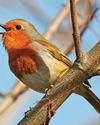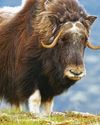
Horses roamed the world long before humans did. Today, most people tend to think of them as domesticated (tamed by humans) – grazing in fenced fields and sheltering in stables. However, millions of horses and ponies still roam freely in the wild. They can be spotted galloping across the grasslands of central Asia and kicking up dust in the Australian outback. They huddle in herds on English moorlands and gather around watering holes in Africa’s Namib Desert. They charge across the North American prairie and hide among island forests in the middle of the Baltic Sea. How did these herds get there? How do they survive? Are they truly wild, or are they descended from domestic steeds that bucked the trend for living alongside people? To find out, let’s trot back in time and trace the history of both horses and humans.
The first horses
Horses arose in the forests of North America around 50 million years ago. For millions of years, dozens of different types lived alongside each other. Some were as small as today’s dogs, tiptoeing through the undergrowth as they nibbled leaves, fruits and shoots.
Others adapted to live outside the forest, grazing on North America’s vast grasslands, alongside woolly mammoths. These creatures developed unique digestive systems to graze on dry, tough grasses. They also needed long, powerful legs to escape from sabre-toothed cats and other prehistoric predators that prowled the prairie. They included the first animals in the group known as Equus – the ancestors of all today’s horses, donkeys and zebras.
هذه القصة مأخوذة من طبعة Issue 72 من The Week Junior Science+Nature UK.
ابدأ النسخة التجريبية المجانية من Magzter GOLD لمدة 7 أيام للوصول إلى آلاف القصص المتميزة المنسقة وأكثر من 8500 مجلة وصحيفة.
بالفعل مشترك ? تسجيل الدخول
هذه القصة مأخوذة من طبعة Issue 72 من The Week Junior Science+Nature UK.
ابدأ النسخة التجريبية المجانية من Magzter GOLD لمدة 7 أيام للوصول إلى آلاف القصص المتميزة المنسقة وأكثر من 8500 مجلة وصحيفة.
بالفعل مشترك? تسجيل الدخول

SUGAR RUSH
Join the candy craze as Claire Karwowski studies the sugary science of sweets.

Wildlife watch
Stevie Derrick shows you what to spot in nature this month

The Sixth Sense
Could humans have more than five senses?

Catherine Heymans
Meet the starry-eyed astronomer who loves backyard stargazing.

WORLD OF WHIFFS
Stevie Derrick follows her nose to track down the world's grossest stinks and nastiest niffs.

Dogs can understand names of objects
Humans enjoy talking to their dogs. If you have a four-legged friend of your own, you might have taught them to respond to commands like \"sit\" and \"stay\".

Smoke rings in the sky
In April, videos were filmed of Mount Etna, a volcano on the Italian island of Sicily, puffing what looked like smoke rings into the sky.

Huge gold nugget found
A gold nugget that could be the largest ever found in England was recently put up for auction. Metal detectorist Richard Brock discovered the nugget on farmland during an organised expedition in Shropshire last year.

Evolutionary tree shows birds in a new light
Researchers have produced the most detailed evolutionary tree of birds ever.

The largest plane to ever fly
Take a first look at the mighty Radia WindRunner aircraft